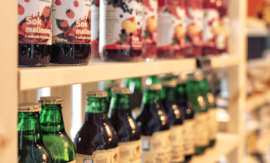The fundamental elements of process management are based on the terms work, task, function, and process. The event is a special process that determines the states of goods. A logistics system encompasses both a process and the order and process management connected with it. Together with business processes, logistics systems form the focus of the logistics perspective. Whether linked or integrated, business processes result in the characteristic pattern. Push logistics are distinguished from pull logistics. Temporal synchronization between manufacturer and user is realized by means of inventory control processes. In the network of customer orders, production orders and procurement orders, inventory, and lead times are the classic design elements of logistics.
Instruments of logistics analysis make up business process analyses in differing degrees of detail. The organization-oriented process chart is an old method that corresponds closely to the way people naturally view the processes. Layouts of the production infrastructure are useful aids to visualizing restrictions and new possibilities. The detailed analysis of the process plan — the basic process analysis — finally allows more precise mapping of the facts and thus helps to qualify the natural view of the processes held by the persons involved.
Logistics analysis works out a characteristic for the planning & control of each product or product family. For each company within a supply chain, a company-internal analysis must be carried out, and final comparisons will reveal areas for potential improvement. Comparison of the findings within and across companies shows potential hindrances to effective logistics, both within the company and in the supply chain as a whole.
By establishing the characteristic features in planning & control, we have already gained indications for appropriate business methods. The characteristic features can also be seen as influences on logistics performance indicators. The chapter discusses six features referring to the user and the product or product family, five features in reference to logistics and production resources, and seven features of the production or procurement order.
Using the three morphological schemes describing features of transcorporate logistics in supply chains, we can obtain an overview of the current state and the specific type of the supply chain and gain some insights into the appropriateness of transcorporate methods and concepts.
Fundamental concepts in logistics and operations management can be distinguished within a matrix of two dimensions: the product variety concept and the facility layout. A first example showed the branches in dependency upon these two characteristics, in a first approximation. The second example, as an extension to the production types already defined by the facility layout, positions additional production types — mass production, repetitive manufacturing, batch production, mass customization, and one-of-a-kind production — using the additional dimension of the product variety concept. The third example positioned four different concepts for planning & control within the matrix. Each comprises particular types of business processes and business methods for order planning and fulfillment: the basic MRP II / ERP concept, and — as extensions — the lean/JIT concept, the variant-oriented concept, and the processor-oriented concept.
Course 4: Sections and their intended learning outcomes

Course 4 – Business Process Analysis and Concepts for Planning & Control
Intended learning outcomes: Explain important techniques in business process engineering. Describe characteristic features relevant to planning & control in supply chains. Disclose fundamental concepts in logistics and operations management.

4.1 Elements of Business Process Management
Intended learning outcomes: Produce an overview on terms in business process engineering. Describe order management and graphical representation of logistics processes.

4.2 Push Logistics and Pull Logistics in the Design of Business Processes
Intended learning outcomes: Differentiate between pull logistics and push logistics. Describe the temporal synchronization between use and manufacturing with inventory control processes.

4.3 Important Techniques of Analysis in Business Process Engineering
Intended learning outcomes: Explain the organization-oriented process chart as well as the detailed analysis and time study of processes. Disclose manufacturing and service processes in the company-internal and transcorporate layout.

4.4 Characteristic Features Relevant to Planning & Control in Supply Chains
Intended learning outcomes: Produce an overview on principle and validity of characteristics in planning & control. Explain six features in reference to customer, and item or product or product family, five features in reference to logistics and production resources, as well as seven features in reference to the production or procurement order. Describe important relationships between characteristic features of transcorporate logistics in supply chains.
4.5 Branches, Production Types, and Concepts for Planning & Control
Intended learning outcomes: Describe branches of industry in dependency upon two characteristic features, "volume versus variety". Explain in detail production types and concepts for planning & control. Disclose selecting an appropriate branch model, production type, and concept for planning & control.

4.6 Summary
.

4.7 Keywords
.

4.8 Scenarios and Exercises
Intended learning outcomes: Differentiate between various concepts for planning & control within the company. Using process charts for synchronization between use and manufacturing with inventory control processes. Elaborate a basic process analysis as well as manufacturing processes in the company-internal layout.

4.9 References
.
